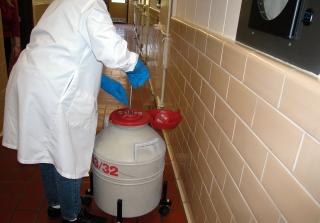National Seed Laboratory - Genetic Conservation

Exotic diseases (sudden oak death, white pine blister rust and chestnut blight), insects (emerald ash borer and wooly adelgid), invasive weeds (cheat grass), fires and changing land use patterns threaten the existence of many native US trees and other native plants in the wild. Some native grasses, forbs and tree species are undergoing domestication in advanced breeding programs and commercial seed production. These events mandate that the US adopt a gene conservation program to preserve wild sources of all plant germplasm. Long term seed storage will be an important part of this preservation program. In cooperation with the USDA Agricultural Research Service (ARS), National Center for Genetic Resource Preservation (NCGRP), the FSNSL provides long term seed storage for gene conservation. Seeds are received at the NSL for germination tests and then packaged and transferred to the NCGRP for long term storage in disaster proof freezer vaults. These seeds can then be used for future restoration of plant populations lost in the wild due to various disturbances. All entries into the NCGRP storage will be traceable on the ARS Genetic Resource Information Network (GRIN) data base system over the internet.
The Germplasm Resources Information Network (GRIN) provides continuous access to databases for the maintenance of passport, characterization, evaluation, inventory, and distribution data important for the effective management and utilization of national germplasm collections. There are more than 500,000 accessions in the GRIN database representing more than 10,000 species of plants. You can view the Forest Service accessions here: enter FSNS in the text block and check the block for historical and unavailable accessions.
Species groups currently being collected
